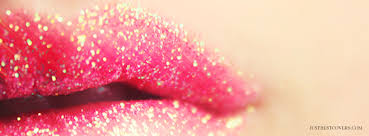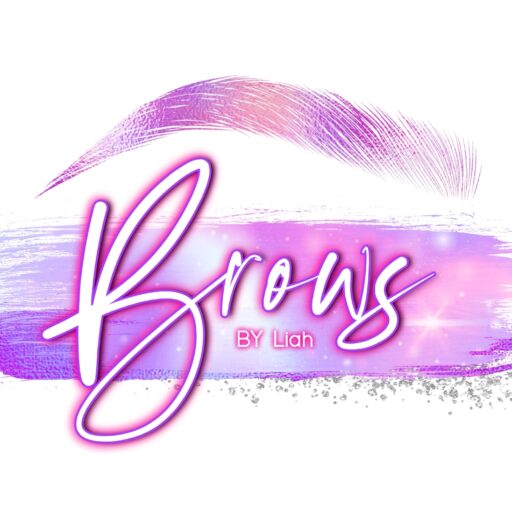
Plasma Pen Fibroblasting
Everything you need to know about Fibroblasting
Plasma Skin Tightening Fibroblasting
Plasma Skin Tightening is a non surgical cosmetic enhancement designed to shrink the skin using a disposable, sterile probe that stimulate fibroblasts. Fibroblasts are collagen producing cells in the skin. This treatment is performed with a device called the plasma pen that creates plasma waves. These waves are directed as tiny light spots along the wrinkle lines. The needle like attachment never touches the skin.
Tiny plasma arc connects the tip of the device to the surface of the skin (called arching) which causes the old collagen to be removed by a process called sublimation (evaporation) and fibroblasts are stimulated to produce new collagen. The skin that is targeted contracts and is eliminated without any cutting, which results in the tightening and shrinking of the targeted skin.
This advanced procedure helps revive natural levels of collagen, fibronectic, and hyaluronic acid needed for fresh youthful skin. The plasma pen leaves tiny brown spots at strategically placed areas to attain the desired result. The skin around the dot tightens instantly.
What is plasma and how is it related to this procedure?
Plasma has two different meanings for this procedure. The pen creates an electric plasma arc which are created by an electrical discharge between the tip of the pen and the skin, singeing the surface and tightening of the underlying tissue. This technology involves the use of plasma which is formed through the ionization of atmospheric gas. Ultimately, the skin fibers contract, shorten, and tighten resulting in a reduction of the skin surface.
Plasma also refers to the colorless fluid in our blood which makes up about half of the content of blood. Plasma performs many functions such as clotting, transporting substances through the blood, and dissolving nutrients. The primary purpose of plasma is to transport nutrients, hormones, and proteins to the parts of the body.
Scabs
It’s extremely important to understand the role that scabs play in this procedure. Scabs are cells called platelets. As blood is exposed to air, platelets rush to the scene and begin sticking together working with proteins called fibrin and other substances. When the clot hardens, this is usually referred to as a scab. During the healing process, connective tissue cells below the scab contract and pull the edges of the wound together. When the wound is healed, the scab falls off to reveal healthy, repaired skin. This healing process is why the procedure causes retraction and tightening to the area of the skin that is treated.
Advantages of Fibroblasting
- No cutting of skin
- No stitches required
- Very low risk procedure
- Minimal side effects and far less downtime
- Quick & easy procedure
- No risk of blindness as there is with surgery
- No thinning of the skin
- Significant cost saving
Areas of Application
- Surgical Blepharoplasty
- Wrinkle Reduction
- Senile Angiomas
- Flat Warts
- Telangiectasia
- Soft Fibroids
- Stretch Marks
- Common Warts
- Skin Tightening
- Skin Tags
- Seborrheic Warts
- Angiokeratomas
- Xanthelasma
- Seborrheic Keratosis
- Keratosis Actinica
- Capillary Nevi
- Lentigos
- Keratoacanthomas
- Molluscum Contagiosum
- Filiform Warts
- Nevus Araneus
- Keratosis
- Melasma
- Scar Correction
How Long does it last?
Fibroblasting is more than a simple tightening treatment, the volume of the skin is actually reduced. These results will last as long as they would with invasive surgery. Like all cosmetic procedures, the effects of Fibroblast are not entirely permanent as it; of course, does not stop the hands of time. Positive results should last years depending on the area treated. Effects will be noticeable immediately after the first treatment, but the final results will be seen after eight weeks. For some, an additional treatment may be required after eight weeks for maximum results.
The Day of your Appointment
Do not wear any makeup on the treatment area. You may take an antihistamine 30 minutes prior to appointment to help with swelling. A numbing agent is applied and left to take effect for up to 30 minutes. Treatment time is between 10-40 minutes depending on the size of the area.
Immediately after the appointment the area may be red and mildly swollen with small carbon crusts (spots). You may experience a sensation that feels like a sunburn which will likely last a few hours. Swelling may intensify over the next few hours and may lasts 2-3 days. The carbon crusts will lift within 5-12 days depending on the individual and the area treated. Results gradually improve over the course of the following 8 weeks.
For 12 Hours After Treatment
- No Makeup
For 48 Hours After Treatment
- No Sauna
- No Sunbeds
- No Sun Exposure
- No Botox, Collagen Injections or Dermal Fillers
For 1 Week After Treatment
- No Swimming
- Do Not Use Anti-Aging Creams
- Do Not Use AHA’s, Glycolic or Retinol
- Do Not Use Exfoliating Products
At All Times During the Course of Treatment
- A minimum of SPF50 must be applied and exposure to the sun should be avoided
- Regular moisturizing with either an all natural moisturizer or hyaluronic acid is vital to replenish moisture and prevent the skin from becoming dry and peeling
Post-Care Instructions
- Most people will experience a mild burning sensation immediately following any Fibroblast procedure. This is similar to a sunburn which should resolve within a few hours. However, this depends on tolerance and discomfort may last longer. If they feel particularly uncomfortable, anti-inflammatories such as Advil or antihistamines such as Benadryl are suggested. It is up to the individual to decide on self-medication.
- As a natural healing response, it is usual for the treated area to become swollen, especially around the more delicate area such as the eyes. Ice packs not only soothes but also helps the swelling. Recovery can vary depending on each client’s natural rate of recovery. Most people find it only lasts a few days. In extreme cases the swelling can last several days longer and may interfere with vision if Fibroblast treatment was performed in the eye area.
- Initially after treatment and up to three days later, there may be occasional weeping. This is the natural healing response to the Fibroblast procedure.
- As the treated area begins to heal, inform them that they will notice dryness, where a brown/black crust develops on the surface of the skin. This will flake off after a few days but in some cases can take up to 10 days.
- Make sure to inform them that they DO NOT PICK the crusting as it can lead to infection or scarring. It is important to keep this area clean.
- It is strongly advised that they use an SPF 30-50 sunscreen (throughout the year including the colder months) to avoid sunburn as the area’s sensitivity to sunlight will be heightened for up to 3-4 months post Fibroblast procedure.
- Boiled lukewarm water is best for cleaning the treated area(s).
- DO NOT use alcohol-based cleansers as this will slow down the healing process.
- For optimum results, more than one Fibroblast treatment is usually needed and can be performed typically 8-12 weeks onwards after the initial procedure.
- It is important that these crusts are not removed (never scratch, otherwise a scar will remain). Instead, twice daily in the morning and in the evening, carefully clean the areas, then disinfect it with distilled water spray and gently dab with a clean, lint-free cloth. After, apply provided ointment twice daily.
- After the independent peeling of the scab crusts (typically the 5-8 days), pink/red skin forms.
- Sunscreen lotion of SPF50 is recommended six months post Plasma Lift treatment.
- Swimming and sauna activities are only permitted two weeks post treatment and once all the crusts have fallen off the skin surface and the wound is completely healed and closed.
- Smokers may experience a significant worsening of the blood flow, which increases the risk of wound healing and/or slowed healing.
- Note that after the crusts are lost, a slight redness may remain in the following weeks to months. It usually takes 4-6 weeks (sometimes longer) until the skin has reached its normal color again.
- Follow up treatment will not be before eight weeks from the first treatment date.
Pricing -Currently offering 40% off
Eye Treatments:
Upper Eyelid Lift $400 reduced to $240
Under Eyes (Bags and Puffiness) $400 reduced to $240
Crows Feet-$300 reduced to $180
Eye Area Combo (3 Areas) $900 (save $200) reduced to $540
Face Treatments:
Neck Lines- $600 reduced to $360
Neck/Chin Lift- $1,100 reduced to $660
Nasolabial/Smile lines $400 reduced to $240
Lip Flip- $350 reduced to $210
Full Mouth- $700 reduced to $420
Frown Lines ( between eyes)- $300 reduced to $180
Forehead Lines-$350 reduced to $210
Entire Forehead-$550 reduced to $330
Other Areas:
Abdomen-$500-$1,500 reduced to $300-900
Skin Tags (up to 20)-$75
Elbow Lift $600 reduced to $360
Hands $500 reduced to $300
Arms or Knees $600-$900 reduced to $300-600
Buttock Lift-$1,500 reduced to $900
Thigh Lift-$2,500 reduced to $1500
Buttock & Thigh Lift-$3800 reduced to $2280
Multiple Area Treatments:
Entire Face Treatment $2100 reduced to $1260
Face and Neck Treatment $3000 reduced to $1800
Neck & Jawline Lift $1500 reduced to $900
General Contraindications and Reasons Not to Get the Procedure
- Current or history of cancer, especially malignant melanoma or recurrent non-melanoma skin cancer, or pre-cancerous lesions or after recovery from cancer till off medication for 6 months and have GP approval prior to commencing treatment
- Any active infection
- Diseases such as a history of recurrent Herpes Simplex, Systemic Lupus Erythematous or Porphyria
- Use of photosensitive medication, and/or herbs that may cause sensitivity to such as, tetracycline or St. John’s Wart
- Immunosuppressive diseases including AIDS and HIV infection or use of immunosuppressive medications
- Diabetes unless under control
- History of bleeding coagulopathies or use of anticoagulants
- History of keloid scarring
- A history of heart disease (Angina, heart pacemaker, taking anti-coagulant drugs)
- History of bleeding coagulopathies or use of anticoagulants
- Use of oral or topical Roaccutane or Retin A, vitamin A or other such products in the previous 3 months for the treatment of acne or other dermatological conditions
- Surgery in the past 6 months
- Alcohol or Drug Abuse
- Breast feeding
- Cuts and abrasions
- Deep bruising
- Any active infection
- Fever
- High or low blood pressure
- Immediately after pregnancy
- Liver disease and/or any medication that affects the liver function
- Metal implants/plates or pins
- Open wounds/ulcers/sores (on treatment area)
- On regular prescription medication – requires GP approval
- Pacemaker fitted
- Phlebitis
- Poor circulation (blood and lymph)
- Pregnancy or breast feeding patients
- Recent scarring to treatment area
- Skin disorders
- Thrombosis
- Thyroid disease or other hormonal disorders
- Under 18 years of age

